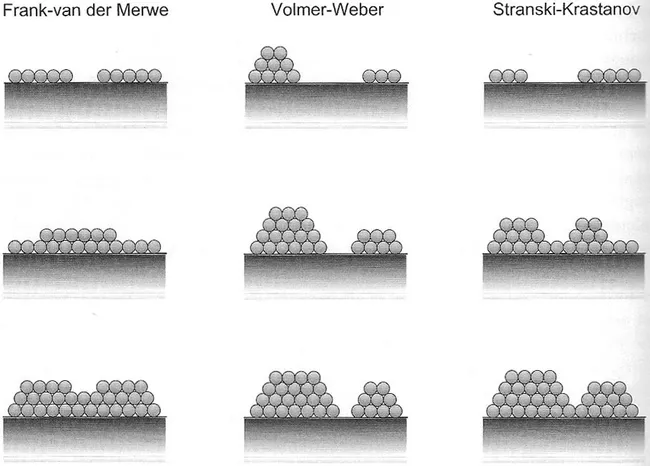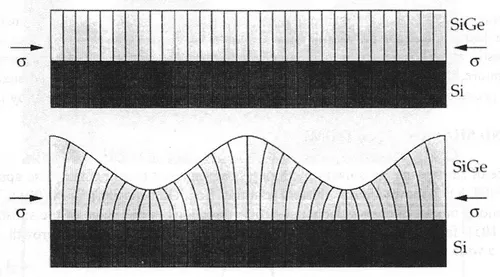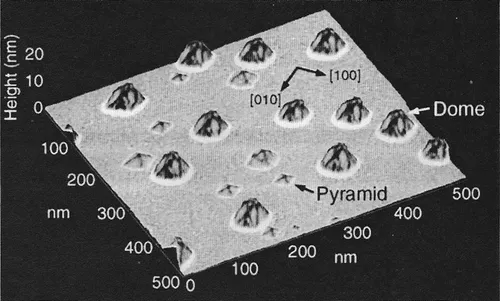Surfaces, Growth and Strain Relaxation
In order to realise bandgap engineering, one should control the alloy composition and the strain residing in the material. The last parameter is very important and requires a good understanding of strain relaxation mechanisms. The best way to get insight is to follow a part of the growth. The figure is a schematic representation of the material surface during growth:

Here one can see so-called of "flat" surface and terrace steps between them. When, by any deposition method, an adatom hits the surface, it will travel along the surface before settling. It can fill up a surface vacancy or sit in the middle of a terrace, but usually adatoms tend to stick to a terrace edge. There are three main types of growth called growth modes:

In Frank-van der Merwe mode, the adatoms fill up the terrace edges until the lower terrace is filled up and continue doing so layer by layer. In Volmer-Weber mode, the adatoms nucleate at certain spots and pile up to form dots. In Stranski-Krastanov mode, which has characteristics from both other growth modes: in the beginning, a flat layer called the wetting layer starts to form, followed by bumps. Let us first consider the case of compressive strain. For a thin deposition layer, it is energetically favourable to have a layer under strain. As the layer reaches the so-called critical thickness, the surface starts to form waves as shown in the figure:

These waves grow into small piramidal-shaped pits sticking out of the surface and gradually evolve into dome-shaped bumps. A picture of such a sample is seen in the figure:

Somewhere between this undulation and island formation process, ruptures called dislocation lines start to form. These are boundaries between two bits of the same material where the lattice is distorted to cancel the stress at least partially. There are hence difference strain relaxation methods and one can try to control which process dominates . In the case of tensile strain, dislocations appear without islkand formation as these islands are as it were portions of material pushed out to the surface by compressive strain. An undesired high dislocation density may lead to reduced performance of the device but planned dislocation generation may help growing relaxed layers. By certain growth strategies, one can for example surpress the formation of dislocation well beyond the critical thickness. If for example one wants to grow a relaxed SiGe layer, one can make a buffer layer where all the dislocation lines are forced into so that the layer on top is relaxed or one can make a grading of SiGe with gradually changing composition to minimise the lattice constant difference per height. Some of those strategies are discussed below, but before that an introduction to dislocations is appropriate.
